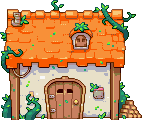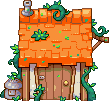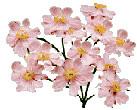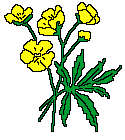The world is ending as we speak, and you can either watch it burn or get up and do something about it. Donations, protests, are good, sure. If you can, donate, go to the streets and vote. How's that working out for you so far?
Revolutions don't start trough democracy. Always remember, the problem isn't who sits in the throne, the problem is there is a throne to sit on. 
If you wanna get your hands dirty and ruin rich people's lives, you've come to the right place. Here's how you can help save the planet trough individual action.
Guerrila Gardening
Guerrilla gardening is the act of gardening, growing crops, flowers, etc; on property the gardeneres do not own. It is a fight against the ownership of land and private property. It started with two celebrated gardeneres, Gerrard Winstanley (1649), and John "Appleseed" Chapman (1801). Since then, it's been adopted by various environment-focused movements, such as Green Anarchism. Below are some methods of Guerrilla gardening you can try out.
- Seed bombing
Why do it?
It feeds pollinators and wildlife, repairs the soil, restores depleted water tables, traps carbon and generates oxygen. Ruins Lawns.
Where to throw and grow? 
Throw these into empty lots, parking medians and rich people's yards. Dandellion seeds are our allies.
How to build it? Below are listed 4 methods for making seed bombs.
1. Shredded Paper MethodMix 1 cup of hot water with 2 cups of shredded paper. Wring out all moisture and mix in native wildflower and/or crop seeds.
Shape into a ball and let dry for at least 24 hours.
2. Fukuoka Method You'll need: 3 parts sifted compost.
5 parts sifted clay (local or clay powder sourced from a garden center).
1 part seed mix; wildflower mixes are great for this. A tray or bucket for mixing.
Use a mixing implement that is small enough for you to move it around without much effort.
Begin by combining your ingredients in the tray and mixing them together well.
Then add a small amount of water.
Sway the tray or bucket in a circular fashion, and watch small clay balls with seeds in them form.
Add more water and repeat. Eventually all the material in your tray will form seed balls.
Let them sit and harden in a cool, dry place for at least 24 hours.
3. Explosive Egg Method You'll need: A needle.
Eggs; use as many as you’d like to spread around. A bowl. Seed mix.
Begin by using the needle to poke a hole at the top and bottom of the egg.
Then use your mouth to blow the egg contents into the bowl. Use the eggs in cooking as needed.
Note that you’ll need to use the eggs within a couple of days, because they’ll go bad after that.
Sterilize the egg shells in a saucepan of boiling water for 15 minutes.
Be careful not to break the eggs.
Dry them on a paper towel, and once they’re completely dry, cover the smallest hole, and insert the seeds in the larger hole.
Each egg acts as a single seed bomb. Keep those you don’t want to use right away in a cool dry place.
4. Paper Mache Method You'll need: Several pieces of construction paper, recycled paper, or old newspaper.
Seed mix. Compost (optional). Food processor.
Begin by cutting your construction paper or recycled paper into 1 inch by 1 inch segments.
Then place your segments into a small dish and cover them with water.
If you choose to, place different colors in their own bowls.
Soak them for about 20 to 30 minutes.
Wring out your bowls lightly, and pulse the soaked paper in a food processor.
If you’ve chosen to keep different colored paper separated, pulse them in an isolated food processor session.
Then return them to the small bowls and sprinkle in some of your seed mix.
Add compost if you’ve chosen to use it.
If the recycled paper pulp is too dry to form into balls, sprinkle bits of water in until it can be formed.
Then roll them into balls, and voila! You have fun, vibrantly-colored seed balls.
Let them dry and harden for at least 24 hours.
Be careful to not get seeds that may be detrimental to your neighborhood.
Foreign seeds may overtake nearby plants, ruining the local ecosystem and biodiversity.
Purchase local seeds from local gardeners instead.
Something else to keep in mind is to never use any sort of plastic in your seed bombs.
It may be tempting to fill a balloon with fertilizer and seeds due to it being way less messy than a clay ball, but remember: humanity has never watched plastic decompose.
For all we know, it could take more than one thousand years.
Yes, the first plastic ever made is still around as a microplastic.
As for glass, our best estimation is four thousand years. Seriously, a glass bottle takes at least 4000 years to decompose.
Is this legal?
What are you, a cop?!






 Welcome to my garden
Welcome to my garden







































